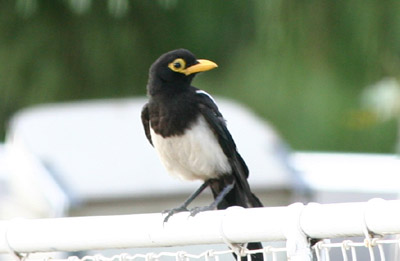
The hardiest of volunteers are winding up the Audubon Society’s Great Backyard Bird Count today. Consistent rain has made it a challenge throughout much of California (don’t get me wrong–you won’t see me complaining about rain at this point).
These bird counts are more than just feel-good exercises in pubic education. The data is useful in serious research, like the Society’s recent stunning report on the likely effects of climate change on bird populations. The study, released last week, combined climate models with 40 years of data from Aububon’s Christmas Bird Count, to paint a grim picture for California’s birds.
The part of the study that focused on California warned that a third of the state’s native bird populations could see their ranges shrink substantially as the planet warms. According to the report:
“These reductions will be part of massive range shifts to all of the state’s bird species caused wholly or in part by the effects of climate change.”
Gary Langham, who co-authored the California study, says it should provide a wake-up call, and not just for those crafting policy to cut greenhouse gas emissions: “It’s also a tool for land managers and conservation groups and others to look at the landscape and understand where their conservation investments would be most wisely spent.”
Langham and his co-author, William B. Monahan note that this is more than a projection:
“Climate change is already pushing species globally poleward and higher in elevation. In California, directional changes in climate during the 20th century were substantial.”
That squares with the observations of local birdwatchers. Tom Rusert, who founded the non-profit Sonoma Birding, says he’s seen a huge influx of American robins (something that might be a welcome sight in my hometown of Syracuse, NY, right about now). Rusert says his Sonoma Valley Christmas Bird Count drew 150 volunteers last year.
Thanks to nature sound recordists Martyn Stewart of Naturesound and Bernie Krause of Wild Sanctuary for providing bird calls for last week’s radio story. The magpie photo comes to us by way of 10,000 Birds.
